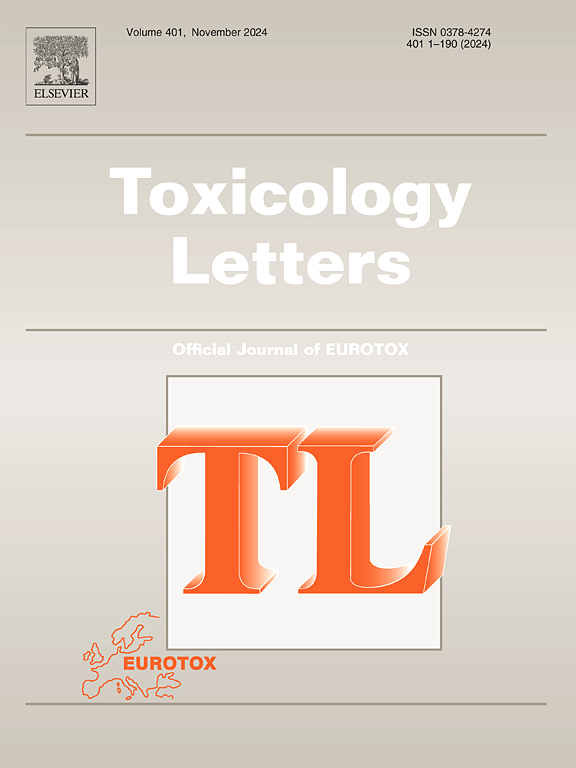马兜铃酸诱导的 DNA 加合物形成引发大鼠肾近端肾小管细胞的急性 DNA 损伤反应
IF 2.9
3区 医学
Q2 TOXICOLOGY
引用次数: 0
摘要
马兜铃酸肾病(AAN)是一种由摄入马兜铃酸(AA)引发的急性肾损伤,其特征是近端小管细胞显著变性和损失。此前有关aa诱导的急性肾损伤的报道称,aa诱导的细胞毒性可在短时间内发生,最长可达24小时;然而,关于急性期AA-DNA加合物形成与细胞毒性机制之间关系的报道很少。在本研究中,我们旨在通过检测AA对NRK-52E大鼠近端小管细胞在24h内的影响,阐明AA暴露初期的毒理学机制。我们早在暴露后4h就检测到AA-DNA加合物的形成,表明50μM的AA会导致DNA损伤。DNA损伤反应通路被激活,在暴露后8h达到峰值。此外,我们观察到8h后G1期细胞周期停滞的趋势增加,随后在16h时细胞活力显著下降。这些结果表明,50μM的AA主要通过形成AA-DNA加合物诱导NRK-52E细胞快速DNA损伤,最终导致G1期细胞周期阻滞。本文章由计算机程序翻译,如有差异,请以英文原文为准。
Aristolochic acid-induced DNA adduct formation triggers acute DNA damage response in rat kidney proximal tubular cells
Aristolochic acid nephropathy (AAN) is a form of acute kidney injury triggered by the ingestion of aristolochic acid (AA), characterized by significant degeneration and loss of cells in the proximal tubules. Previous reports of AA-induced acute kidney injury have reported that AA-induced cytotoxicity can occur within a short period, up to 24 h; however, there are few reports on the relationship between AA-DNA adduct formation and cytotoxic mechanism during the acute phase. In this study, we aimed to elucidate the toxicological mechanisms in the initial phase of AA exposure by examining the effects of AA on NRK-52E rat proximal tubular cells within 24 h. We detected the formation of AA-DNA adducts as early as 4 h post-exposure, indicating that 50 μM of AA causes DNA damage. The DNA damage response pathway was activated, peaking at 8 h post-exposure. Additionally, we observed an increasing trend of G1 phase cell cycle arrest after 8 h, followed by a significant decline in cell viability at 16 h. These findings suggest that 50 μM of AA induces rapid DNA damage in NRK-52E cells, primarily through the formation of AA-DNA adducts, ultimately leading to G1 phase cell cycle arrest.
求助全文
通过发布文献求助,成功后即可免费获取论文全文。
去求助
来源期刊

Toxicology letters
医学-毒理学
CiteScore
7.10
自引率
2.90%
发文量
897
审稿时长
33 days
期刊介绍:
An international journal for the rapid publication of novel reports on a range of aspects of toxicology, especially mechanisms of toxicity.
 求助内容:
求助内容: 应助结果提醒方式:
应助结果提醒方式:


